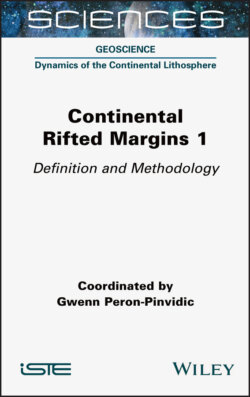Читать книгу Continental Rifted Margins 1 - Gwenn Peron-Pinvidic - Страница 32
1.3.2.3. Shear zones
ОглавлениеShear zones may develop in rocks submitted to intense deformation, where some planar to sub-planar zones are characterized by high strain rates compared to the surrounding rocks that have undergone lower finite strain (Figure 1.20). Shear zones are often considered to be the deeper crustal counterpart of the shallow brittle faults. The motion of the more rigid surrounding blocks may imply a rotational, non-coaxial component in the shear zone. Depending on the rheological context, shear zones can be brittle, semi-brittle, ductile or a combination. Ideally, the deformation is concentrated either in a narrow fracture (brittle) or distributed over a wider zone (ductile). The change from brittle to ductile behavior is classically associated with depth, with the development of intermediate deformation styles where brittle fracturing coexists with plastic flow. However, other parameters can strongly influence that transition, such as the local lithospheric thermal state, the presence of fluids, compositional changes (e.g. serpentinization), strain rates, stress field orientation and compositional anisotropies.
Figure 1.19a. Diagram illustrating a detachment fault accommodating displacement at low angles, with slightly to highly deformed rocks in its footwall (i.e. mylonitic rocks, breccias, cataclasites), and high-angle normal faults bounding tilted blocks on its hanging wall
Figure 1.19b. Photo showing a field example of the Nordfjord-Sogn detachment zone (NSDZ), which is a major detachment fault in Norway. WGR: Western Gneiss region (source: photo by Per Terje Osmundsen)
Figure 1.19c. Extract from a seismic reflection profile in the mid-Norwegian rifted margin (top left) with the interpreted structures (lower left) including a major regional detachment fault and tilted fault blocks. Locations on the map inset, upper left (source: from Peron-Pinvidic and Osmundsen 2020)
Figure 1.20. Illustration of a shear zone: a) diagram illustrating the concentration of the deformation in a preferred zone that generates the formation of highly deformed rocks; b) field photo (photo credits © Haakon Fossen) of the Nordfjord-Sogn detachment (Rutledal, Norway) and c) c1: schematic cross-section illustrating the structural setting of the south-west Norway Devonian basins (source: Osmundsen and Andersen 2001); c2: extract from a seismic reflection profile in the Stord Basin in the North Sea showing the possible presence of shear zones at basement depths (source: Peron-Pinvidic and Osmundsen 2020). Locations on the map inset, lower right
